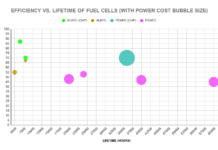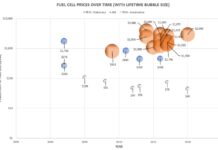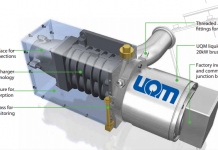by Debra Fiakas CFA
The New Year got off to a rocky start for Ballard Power Systems (BLDP: Nasdaq), a developer of fuel cell technologies and systems. The company ran into some trouble with its strategy to penetrate the China market through a partner. No one should be surprised by Ballard’s difficulties. Fuel cell technology has been under development for more than two decades. Frankly, technology is not the problem – at least any more. Early on developers were beset by numerous challenges, not the least of which was the problem of getting fuel cells to work properly at low temperatures. However, scientists have found solutions and the fuel cells on the market today can start cold at temperatures as low as -30 degrees Celsius. Fuel cell designs today are durable and costs have been reduced dramatically.
According to Grand View Research, fuel cell shipments are still unimpressive at just over 50,000 units in 2013, the last year for which reliable data is available. The majority of fuel cells sold are of the PEMFC or proton exchange fuel cells. Most of the fuel cells sold in 2013 were put into service in North America. Many, including myself, have pointed to the introduction of cars powered by fuel cells as a turning point for the technology. Both Toyota and Hyundai have shown fuel cell cars at major auto trade shows in recent months and expect to begin selling these models in 2015.
Grand View Research predicts that fuel cell installed capacity will reach 665 megawatts by 2020, representing 23% compound annual growth over the next six years. That is much more impressive. To get there though the major players in the fuel cell market, Ballard included, will need to make some major changes in their strategies and tactics to penetrate the market. Apparently, fuel cells are different enough from incumbent power sources that a fuel cell system is not a ‘plug and play’ option.
Thus in considering any fuel cell company, it will be imperative that investors look very closely at market penetration strategies. Fuel cell applications fall generally into three categories: transportation, stationary and portable. Will the company address all three segments or attempt specialization? How developed is the marketing and sales program? Is the leadership experienced in the sector or related power sectors? What partners have been lined up to aid with system design and integration?
We have already observed that Ballard Power has fallen short in the China, a market that is far less developed that North America. In the next posts we look more closely at the marketing strategies of each of the major fuel cell suppliers.
Debra Fiakas is the Managing Director of Crystal Equity Research, an alternative research resource on small capitalization companies in selected industries.
Neither the author of the Small Cap Strategist web log, Crystal Equity Research nor its affiliates have a beneficial interest in the companies mentioned herein.







